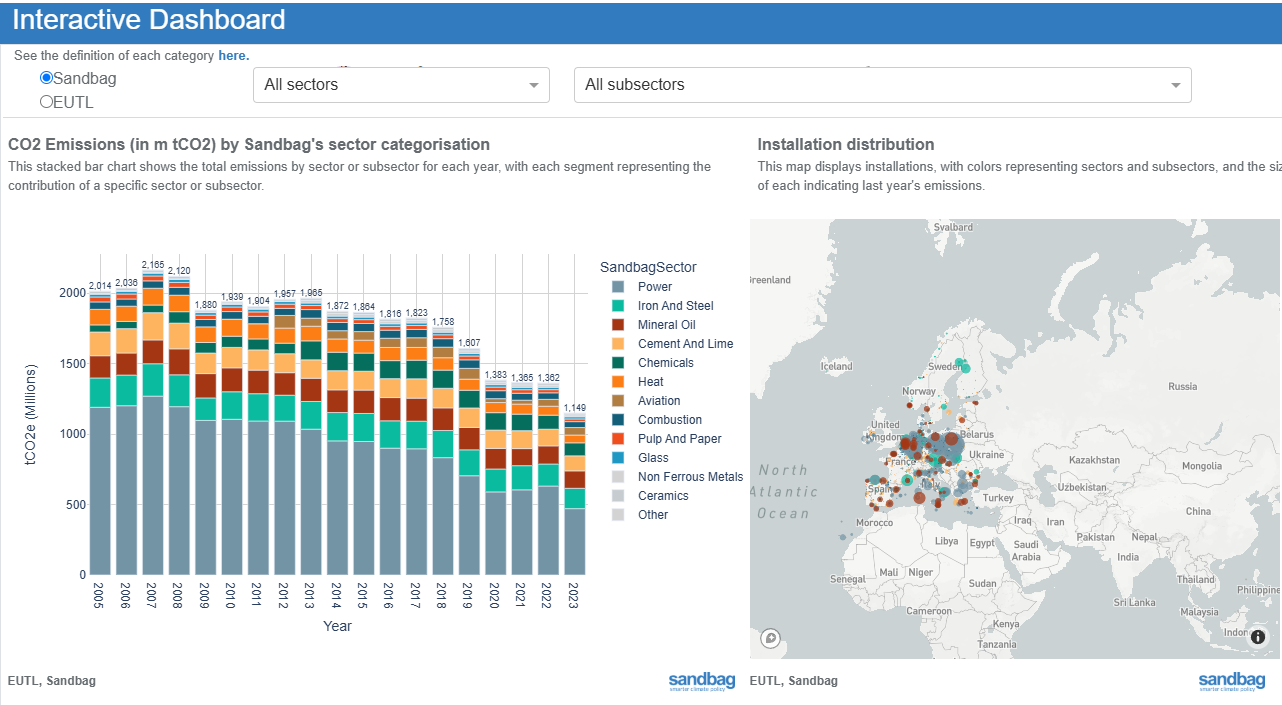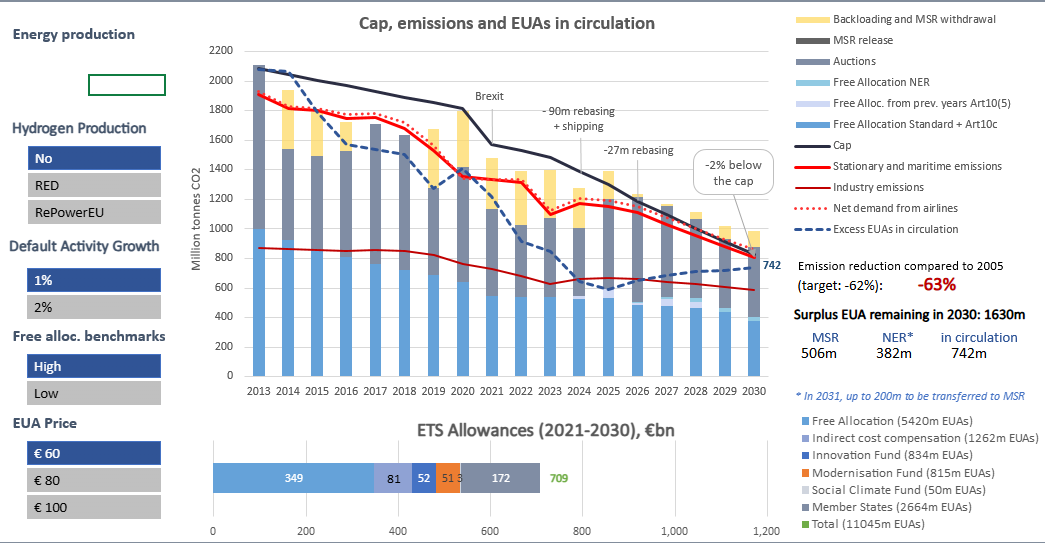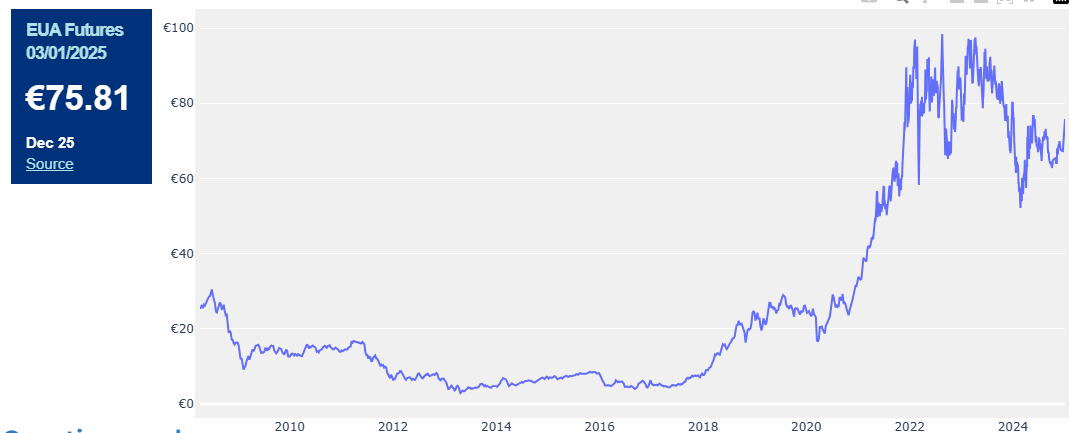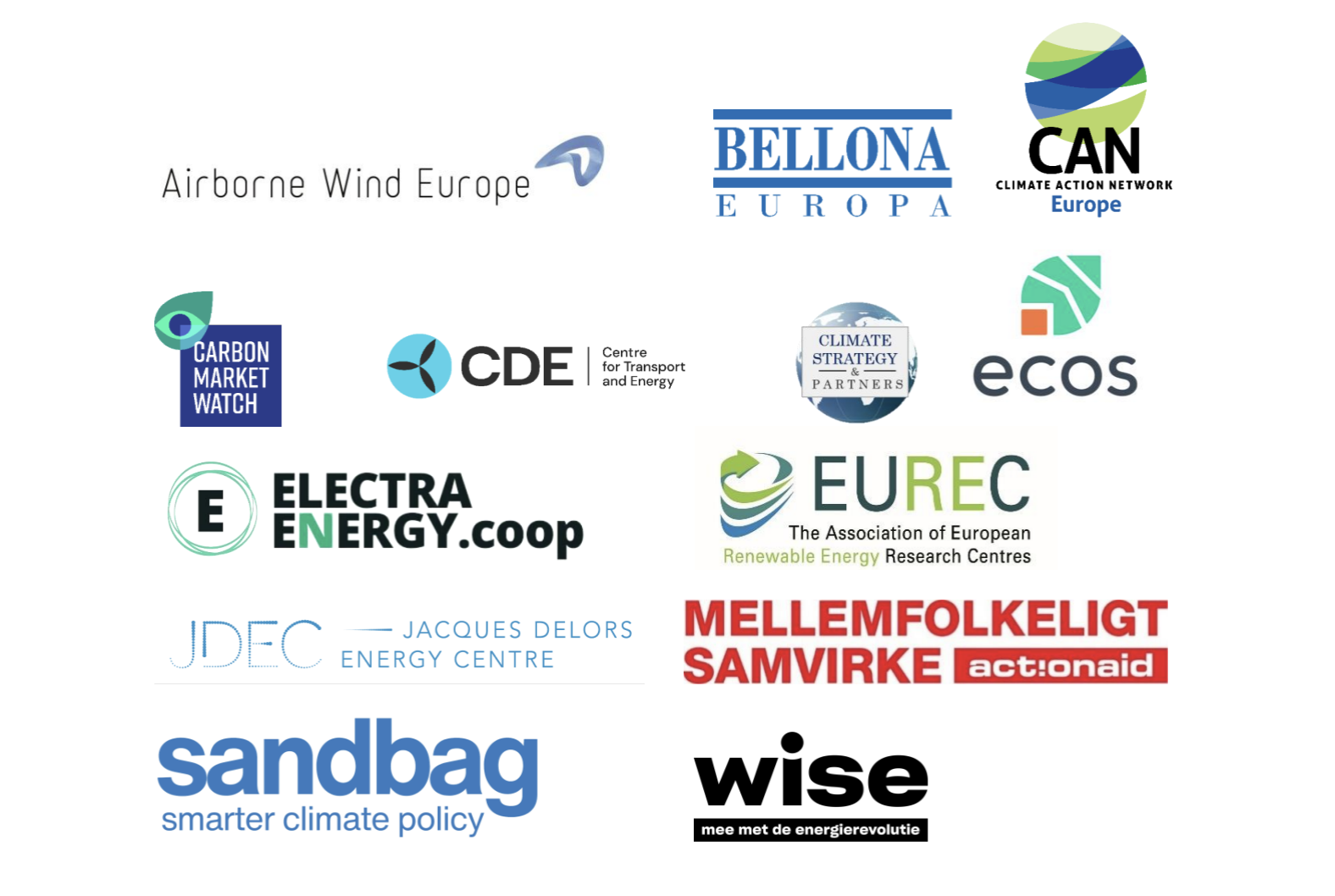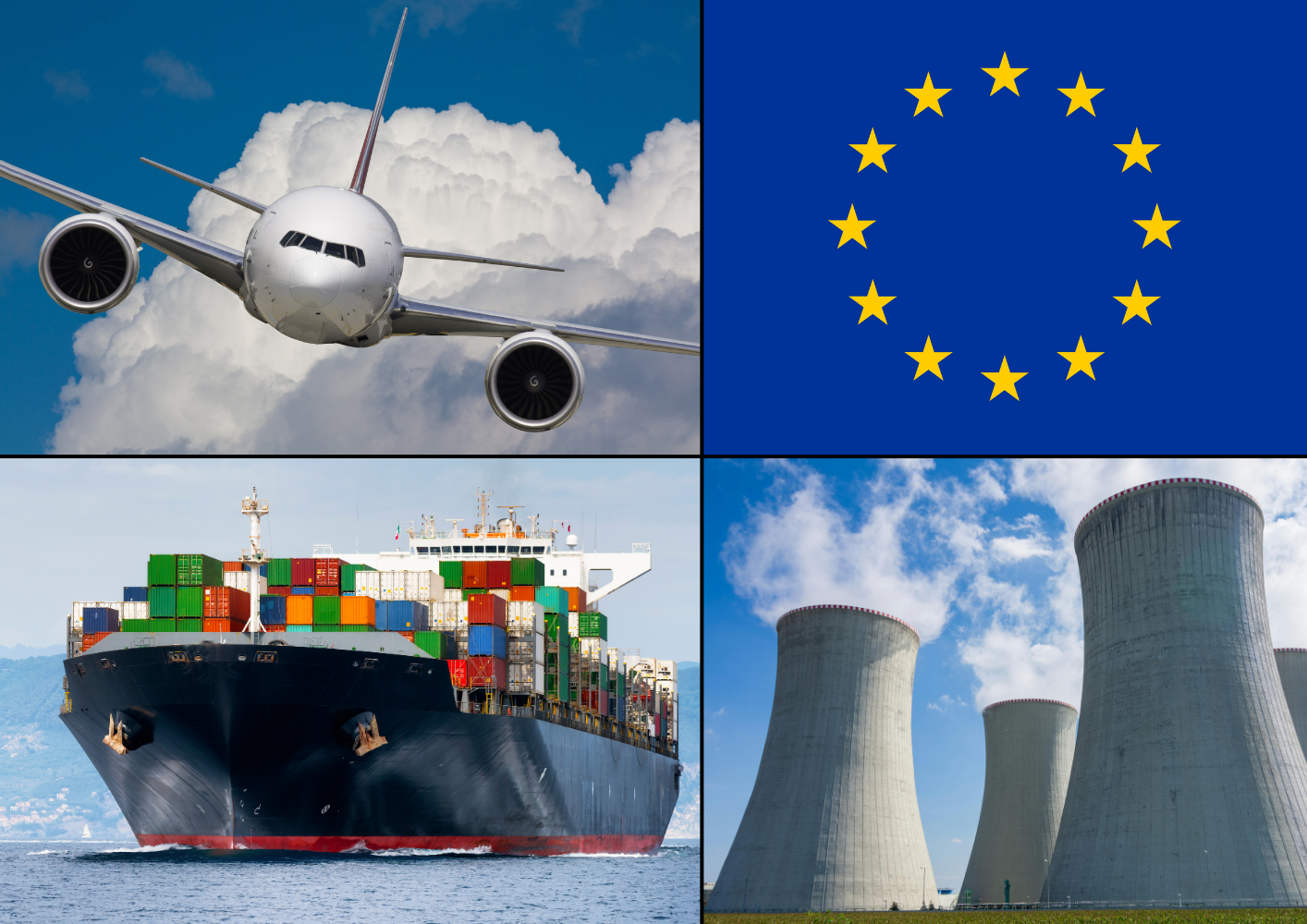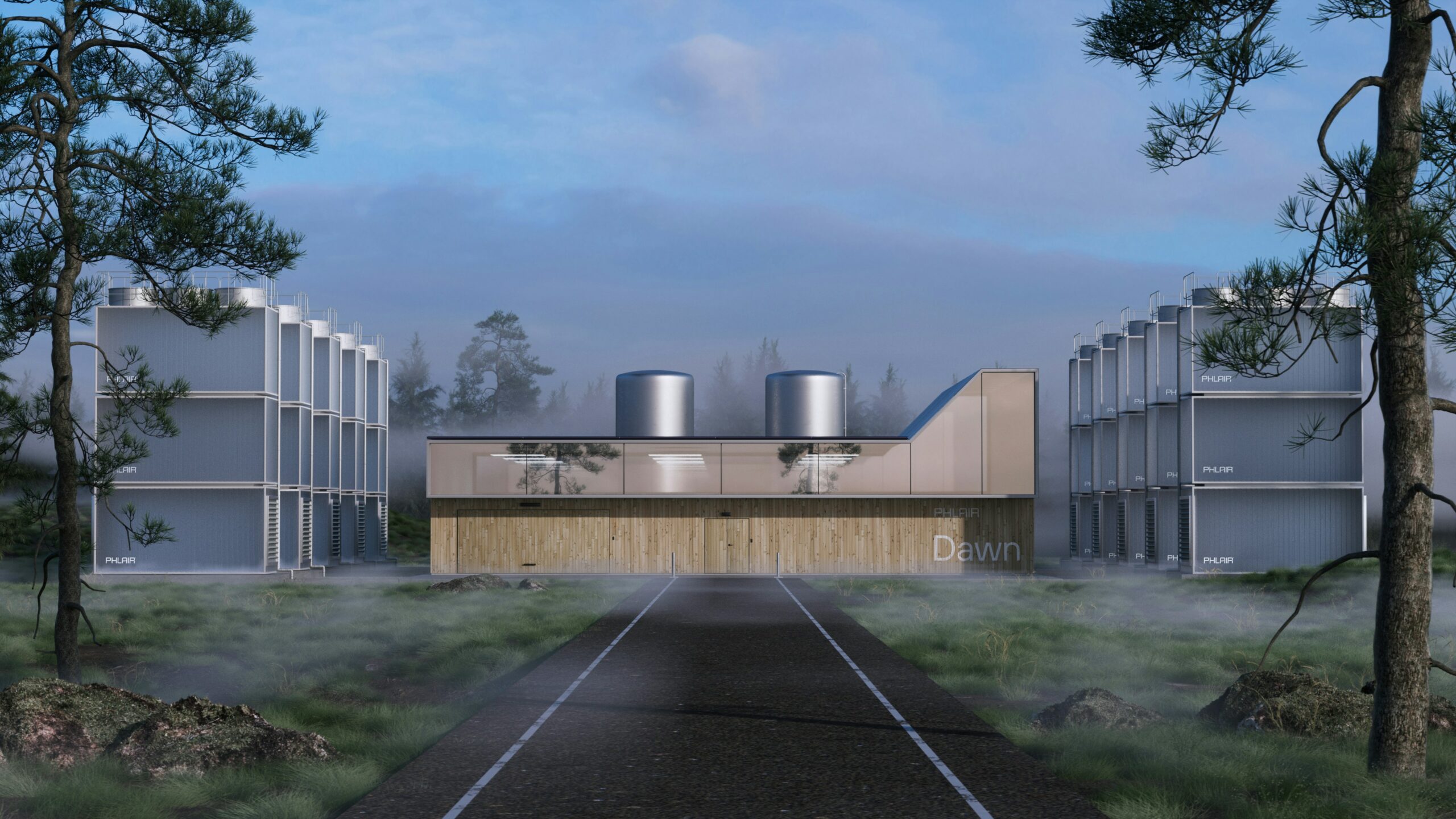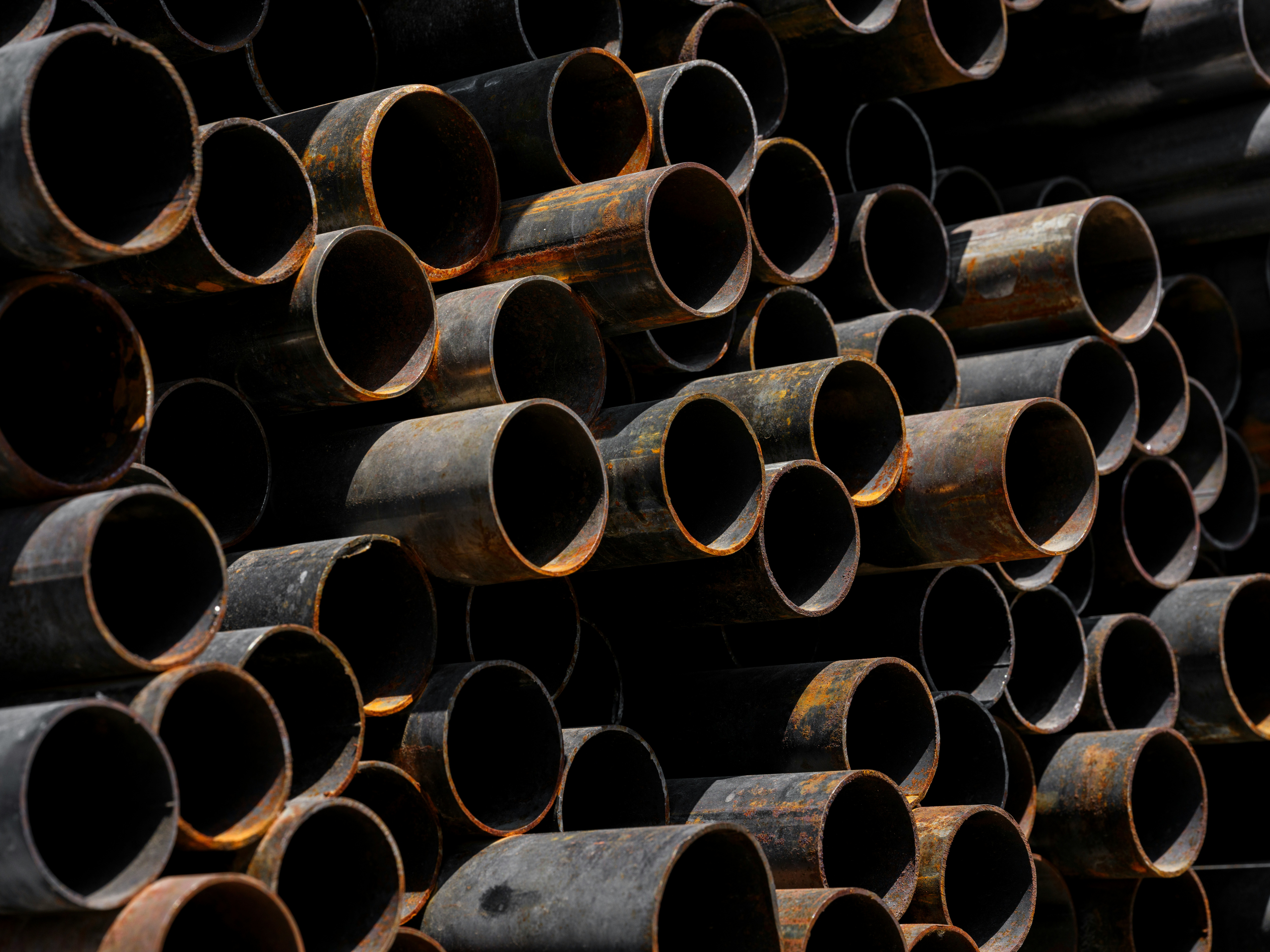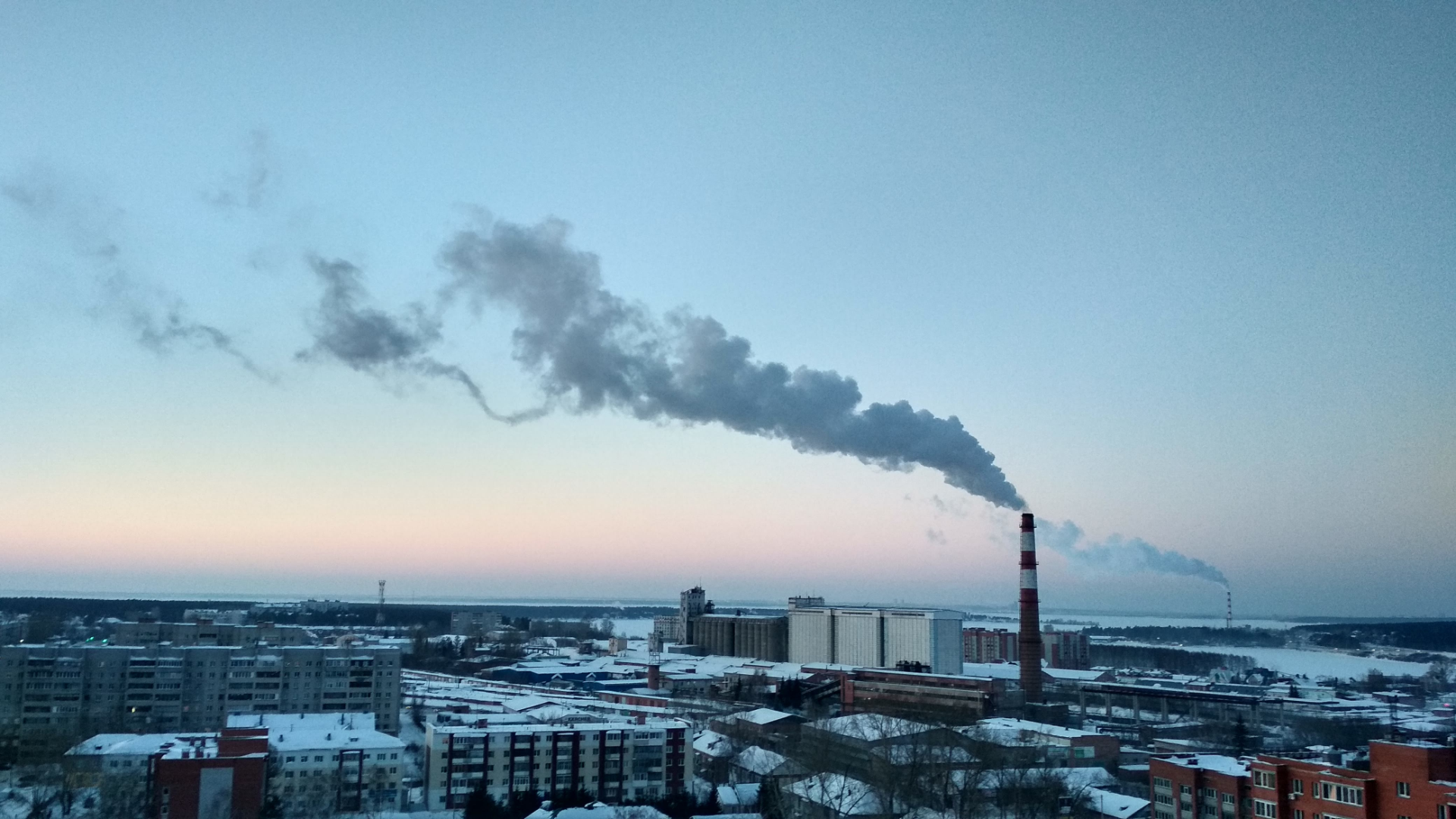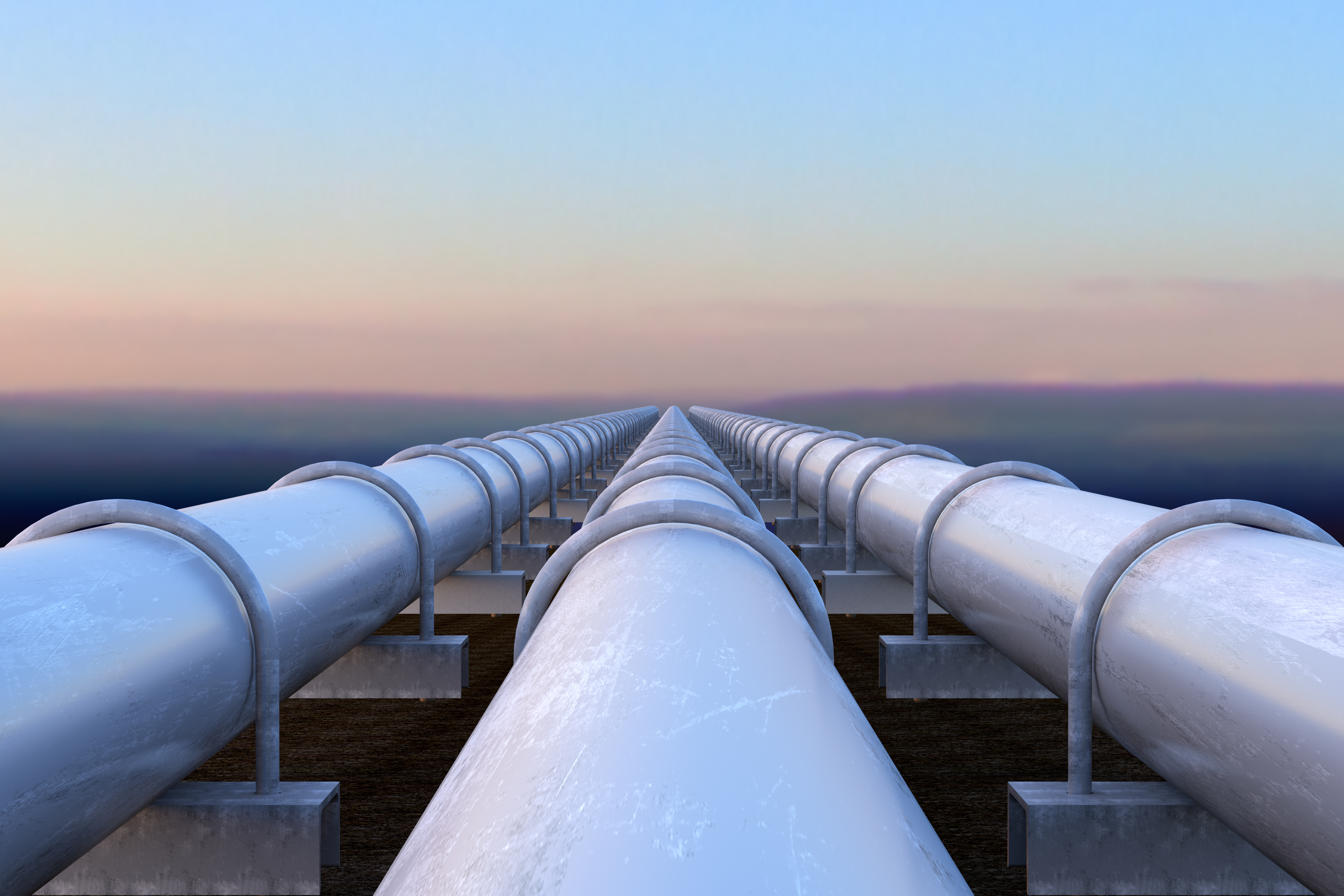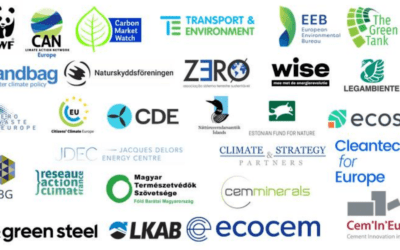EU Emissions Trading System (ETS)
We conduct research on the EU Emissions Trading System (ETS) to make it efficient and effective at reducing emissions.
What is the EU ETS?
The EU ETS is the European Union’s flagship climate policy, designed to reduce greenhouse gas (GHG) emissions cost-effectively.
By creating a market of emission permits, it incentivises individual installations in sectors like power generation and heavy industry to cut emissions.
It was extended to the shipping sector in 2024 and is connected to an ETS covering aviation.
How does it work?
- Cap-and-trade system: A legal cap limits total emissions in sectors like power generation and heavy industry. This cap decreases annually to drive decarbonisation.
- Allowances and trading: Allowances are tradable, creating a carbon market. Companies must surrender one allowance per tonne of greenhouse gas (CO2, N20, PFC) emitted.
- Carbon price: Limiting allowance supply drives a market-based price, allowing factories to decarbonise cost-effectively.
Ongoing challenges
- Until 2018, an oversupply of allowances kept carbon prices very low, providing no incentive to cut emissions.
- Today, prices are higher but free emission allowances and state aid compensation for indirect carbon costs, continue to create unfair competition between polluting and less-polluting processes and products.
Our work
Our tools
We develop in-house tools to help policymakers and stakeholders understand and improve the EU ETS.
EU ETS Dashboard
Explore sector-specific emissions data within the EU Emissions Trading System at various levels of granularity.
EU ETS Simulator
Analyse the impact of policy adjustments on the EU ETS.
Carbon price viewer
Check and analyse the evolution of EU carbon price over time.
Evidence-based advocacy
We deliver data-driven and evidence-based policy recommendations though, direct feedback to institutions, reports and policy briefs.
Our messages
Keeping up with ambitions
The ETS cap is set to reach near zero by 2039 – an achievable goal, partly due to the large surplus of allowances already in the system. There is no need to weaken this ambition by lifting the cap or letting offsets in.
Phasing out free allocation quickly
Free allocation should be phased-out quickly, and accompanied by an efficient implementation of the Carbon Border Adjustment Mechanism (CBAM) to prevent carbon leakage. More about the CBAM.
Reforming free allocation
While it IS still on, free allocation should better level the playing field for – at least – some cleaner alternatives such as steel recycling.
Reforming compensation for indirect carbon costs
This State aid should support businesses for using intermittent renewable electricity rather than stable grid electricity.
Reforming the Innovation Fund
Public money from the Innovation Fund should be better spent. Grants should prioritise early-stage innovation, while mature technologies should only receive performance-based subsidies.
Our achievements
July 2025: Sandbag launches the EU ETS + CDR Simulator and publishes analysis on the risks of premature CDR integration
Sandbag released the EU ETS + CDR Simulator, Europe’s first interactive tool modelling how permanent carbon removals could affect ETS supply, demand, prices and industrial abatement. Accompanying the launch, Sandbag published “Simulating CDR in the EU ETS: The Risks of Premature Integration”, warning that early CDR entry could displace essential near-term emissions cuts, over-incentivise biomass use, and distort carbon price signals.
July 2025: Sandbag shapes the EU ETS & Innovation Fund reform with key recommendations to the Commission
Sandbag submitted comprehensive responses to the European Commission’s 2025 consultation on the future of the EU ETS and the Innovation Fund. Our recommendations included phasing out free allocation, tightening EUA supply in aviation, reforming indirect cost compensation, strengthening the Market Stability Reserve, keeping carbon removals out of the ETS, and redesigning the Innovation Fund to better support high-risk and capital-poor technologies.
December 2024: Sandbag advises against premature integration of carbon removals into the EU ETS
Sandbag’s policy brief “In or Out: What’s best for carbon removals and the EU ETS?” provided guidance for the Commission’s July 2026 report on negative emissions. It concluded that permanent CDR is not ready for the ETS due to immature technologies, weak MRV frameworks, and insufficient CO₂ transport and storage infrastructure. The analysis also found that CDR is not needed in the ETS before 2040, given the expected surplus of allowances.
October 2024: Sandbag reveals steelmaking accounted for 25% of EU ETS industrial emissions in 2023
Sandbag’s analysis introduced a revised sector allocation for ETS emissions, reclassifying combustion emissions from steel mills into the iron & steel sector. This revealed that the steel value chain was responsible for 145 MtCO₂ in 2023 — 25.5% of all industrial emissions under the ETS, far ahead of other sectors.
July 2024: Hydrogen demand will reshape supply & demand in the EU ETS
Our analysis “It’s the hydrogen, stupid!” showed that hydrogen production under REPowerEU could wipe out the ETS surplus by 2030, dramatically altering supply–demand dynamics.
Read our analysis and policy recommendations
Letter to members of the European Parliament Environment (ENVI) committee
The negotiations on key climate files of the Fit For 55 package which was launched by the European...
Reform, not a patch, will curb carbon price volatility
As energy prices hit record levels, the European Union’s carbon emissions permits – which hit €100...
Risk of surplus with Market Stability Reserve – a short story
The EU is in the process of reforming its carbon market (EU ETS) in line with raising the bloc’s emission reduction target up to 55%, from 40% currently. Amongst the many features…
Get involved and support us towards this effort!
While these developments mark important progress, we need more profound changes for the EU ETS to effectively drive decarbonisation at the scale and pace required.

WHAT WE DO
TOOLS
PUBLICATIONS
NEWSLETTER
Mundo-b Matogné. Rue d’Edimbourg 26, Ixelles 1050 Belgium.
Sandbag is a not-for-profit (ASBL) organisation registered in Belgium under the number 0707.935.890.
EU transparency register no. 277895137794-73.
VAT: BE0707935890.

